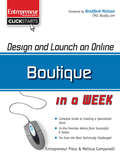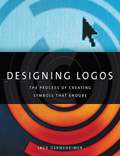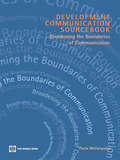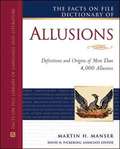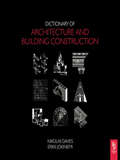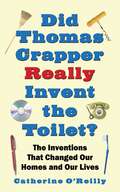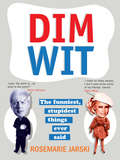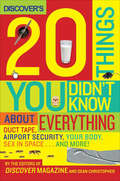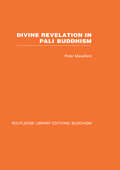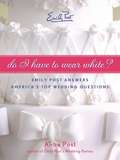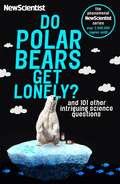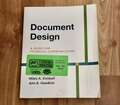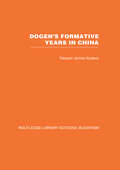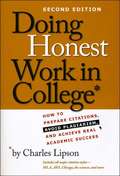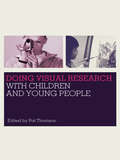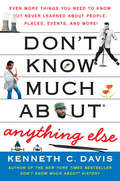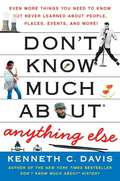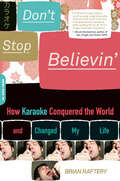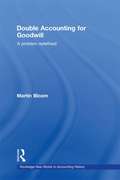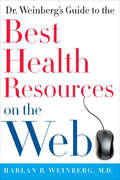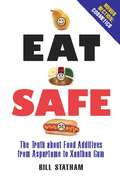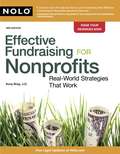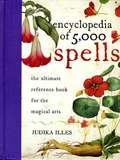- Table View
- List View
Design and Launch an Online Boutique in a Week
by Melissa CampanelliWouldn't you love to own your own trendy boutique-a hot spot that showcases your unique style? Do you daydream about selling your signature products to high-end shoppers? Your dream is just a few clicks and one week away! Whether your taste is classy and elegant or hip and unique, there's a spot for you in today's largest retail center-the internet. In just days, build your posh, online boutique selling luxury, designer goods or your own upscale, signature products. Learn how to handle and showcase inventory, reach affluent shoppers, fulfill orders, accept payments and so much more-using turnkey solutions that require no technical skills! Design a professional specialty-retail site using inexpensive, turnkey solutions from established companies like Google, Yahoo! and Go Daddy that require no programming or graphic design knowledge Create eye-catching content that captures elite shoppers and keeps them coming back. Use foolproof online tools that work 24/7 to handle payments and accept orders. Drive traffic using search engine optimization, new media marketing and other marketing and advertising techniques. Skillfully handle inventory, order fulfillment, customer service and all other operations. Stylish, unique, one-of-kind-turn your personal taste into a successful, online store--in just a few clicks and a few days!
Designing Logos: The Process of Creating Symbols That Endure
by Jack GernsheimerHow to design great logos, step by step by step. * Lavishly illustrated with 750 color images * How-tos, case studies, and detailed analysis of well-known logos What makes a logo good? What makes it bad? What makes it great? The entire process of logo design is examined, from the initial client interview to brainstorming, from first presentation to delivery of the final standards manual. Through 750 color illustrations, classic logos are analyzed, and readers will learn a thirteen-point system for measuring the effectiveness of any logo. Learn about the uses of positive and negative space, balance, color, and typography; follow intriguing case studies; discover how to make effective presentations to clients. Designers, marketing and branding specialists, educators, and students everywhere need this definitive guide to creating great logos.
Development Communication Sourcebook
by Paolo MefalopulosThe 'Development Communication Sourcebook' highlights how the scope and application of communication in the development context are broadening to include a more dialogic approach. This approach facilitates assessment of risks and opportunities, prevents problems and conflicts, and enhances the results and sustainability of projects when implemented at the very beginning of an initiative. The book presents basic concepts and explains key challenges faced in daily practice. Each of the four modules is self-contained, with examples, toolboxes, and more.
Dictionary of Allusions
by Martin H. ManserThis volume nearly doubles an earlier one limited to classical and biblical allusions, drawing as well from Shakespeare, Norse and other mythology, literary texts, historical events, and popular culture including film and television. In addition to explaining what people usually mean when they use the word or phrase and its origin or possible origins, the articles provide an example of its use, a guide for pronouncing any but common English words, and often cross-references to other articles. There is no bibliography. Annotation ©2009 Book News, Inc., Portland, OR (booknews.com)
Dictionary of Architecture and Building Construction
by Nikolas Davies Erkki JokiniemiWith more than 20,000 words and terms individually defined, the Dictionary offers huge coverage for anyone studying or working in architecture, construction or any of the built environment fields.The innovative and detailed cross-referencing system allows readers to track down elusive definitions from general subject headings. Starting from only the vaguest idea of the word required, a reader can quickly track down precisely the term they are looking for.The book is illustrated with stunning drawings that provide a visual as well as a textual definition of both key concepts and subtle differences in meaning. Davies and Jokiniemi's work sets a new standard for reference books for all those interested in the buildings that surround us.To browse the book and to see how this title is an invaluable resource for both students and professionals alike, visit www.architectsdictionary.com.
Did Thomas Crapper Really Invent the Toilet?: The Inventions That Changed Our Homes and Our Lives
by Catherine O'ReillyWhich came first, sliced bread or the toaster? When did most people begin wearing deodorant? Who invented the electric blanket? Catherine O'Reilly tackles questions such as these with a keen curiosity and well-honed writing skills. Her ability to turn any normal home into a jungle of history, invention, and technological wonder is a treat. For fans of Schott's Original Miscellany and The Book of Useless Information, O'Reilly's Did Thomas Crapper Really Invent the Toilet? is another smart and quirky look at miscellaneous items. Learn the real histories of the blender, the fire extinguisher, the cheese grater, the clock radio, deodorant, Post-its, fabric softener, and, of course, the toilet. These are the unknown stories of everyday items that we take for granted.
Dim Wit: The Funniest, Stupidest Things Ever Said
by Rosemarie Jarski'They misunderestimated me' George W. Bush Einstein said only two things are infinite - the universe and human stupidity. So in deference to the dumbing down of our culture, comes Dim Wit - a collection of the most jaw-droppingly stupid things ever said. The cast includes every famous foot-in-mouther from George W Bush to Prince Philip, Paris Hilton to Jade Goody, not to mention hundreds of unsung idiots plucked from villages the world over. The result is a confederacy of dunces more pro-fun than profound - a clever witticism may coax an inward smile but it takes a really stupid remark to deliver a belly laugh. So pick up Dim Wit and prepare to embrace your inner moron - it may be the smartest thing you do...'My grandma overheard two women talking in a doctor's surgery. After a while, one said to the other, "Do you know, Mary, I don't feel too well. I think I'll go home."' - Robyn Jankel'I don't think anyone should write his autobiography until after he's dead.' - Samuel Goldwyn 'Winston Churchill? Wasn't he the first black President of America? There's a statue of him near me - that's black.' - Danielle Lloyd
Discover's 20 Things You Didn't Know About Everything: Duct Tape, Airport Security, Your Body, Sex in Space . . . and More!
by Discover MagazineHow much do you know about . . .ObesitySleepMeteorsAliensBeesSperm banks Sex in spaceDuct tapeGermsAirport securityDeathAncient weaponsRatsThe InternetBirthWeatherMilkMosquitoesYour bodySpace disastersDISCOVER'S 20 Things You Didn't Know About Everything is the first book written by the editors of the award-winning DISCOVER magazine. Based on DISCOVER'S most eagerly awaited monthly column, "20 Things You Didn't Know About," this original book looks at many popular—and sometimes unexpected—topics in science and technology, and reveals quirky, intriguing, and little-known facts.Whether you're just curious or think you already know everything, this book is guaranteed to expand your mind.
Divine Revelation in Pali Buddhism (Routledge Library Editions: Buddhism #Vol. 11)
by Peter MasefieldOriginally published in 1986. In this study of initiation in the Nikayas (Discourses of the Buddha), the author presents evidence which makes it clear that salvation in early Buddhism depended upon the intervention of the Buddha’s grace. Contrary to the view of Buddhism as a philosophy of self-endeavour, the picture that emerges from examination of the canonical texts is one of Buddhism as a revealed religion in every sense of the term.
Do I Have To Wear White?
by Anna Post"I can't choose between my two best friends. Can I have two maids of honor?" "My fiancÉ and I are considering a destination wedding. Are we obligated to cover our attendants' travel expenses?" "Do we have to invite our guests' children to our wedding?" "I'm still close to my ex-husband's parents. Would it be okay to invite them to my wedding?" "How do my partner and I go about planning our commitment ceremony?" "My parents are divorced and each has remarried. Where do they sit in church?" "Do I have to wear white?" Do I Have to Wear White? draws on the Posts' extensive database of wedding questions received through their Web site, as well as popular topics addressed in their columns. For busy engaged couples and their families, attendants, and guests, this book provides at-a-glance answers to everything from essential bridal basics to the knotty logistical questions that spring up around this joyous-yet often complex-event.
Do Polar Bears Get Lonely: And 101 other intriguing science questions
by New ScientistDo Polar Bears Get Lonely? is the third compilation of readers' answers to the questions in the 'Last Word' column of New Scientist, the world's best-selling science weekly. Following the phenomenal success of Does Anything Eat Wasps? (2005) and the even more spectacularly successful Why Don't Penguins' Feet Freeze? (2006), Do Polar Bears Get Lonely? includes a bumper crop of wise and wonderful questions and answers such as:Why does garlic make your breath smell? How toothpaste makers get the stripes in toothpaste? Why do we get 'pins and needles'? Why are some people left-handed and other people right-handed? Can insects get fat? Do elephants sneeze? And do fish get thirsty? What causes cells to stick together in the human body rather than simply fall apart? And why are pears pear-shaped (and not apple-shaped)?This eagerly awaited selection of the best once again presents popular science at its most entertaining and enlightening.
Document Design: A Guide for Technical Communicators
by Ann R. Hawkins Miles A. KimballThe technological revolution of the last ten years has radically changed document designers' materials, processes, and tools of the trade. In short, choices about everything from typography and color to planning and production have changed -- even multiplied. The first new text for the college market in ten years, Kimball and Hawkins' Document Design assumes from the start that students are working online to produce a fuller range of print and online documents, designed and delivered differently in a digital world. Through practical, accessible advice and examples, Kimball and Hawkins lay out the array of elements and choices that document designers need to consider, all in the context of a rhetorical framework that allows students to see the effects of those choices. The only text to integrate a range of theoretical perspectives, visual perception, visual culture, and visual rhetoric, Document Design teaches students to think more critically about their own design decisions and to keep usability in mind every step of the way. True to its message, this artfully designed text practices the principles it teaches and is sure to become a reference that students will keep.
Dogen's Formative Years: An Historical and Annotated Translation of the Hokyo-ki (Routledge Library Editions: Buddhism)
by Takashi James KoderaOriginally published in 1980. Dogen was the founder of the Soto School of Zen and one of the most influential thinkers in the history of Japanese Buddhism. When originally published, this historical and textual study was the first to examine in detail the line of continuity between Dogen and his Chinese predecessors, through his Chinese master, Ju-ching.
Doing Honest Work in College: How to Prepare Citations, Avoid Plagiarism, and Achieve Real Academic Success
by Charles LipsonSince its publication in 2004, Doing Honest Work in College has become an integral part of academic integrity and first-year experience programs across the country. This helpful guide explains the principles of academic integrity in a clear, straightforward way and shows students how to apply them in all academic situations—from paper writing and independent research to study groups and lab work. Teachers can use this book to open a discussion with their students about these difficult issues. Students will find a trusted resource for citation help whether they are studying comparative literature or computer science. Every major reference style is represented. Most important of all, many universities that adopt this book report a reduction in cheating and plagiarism on campus. For this second edition, Charles Lipson has updated hundreds of examples and included many new media sources. There is now a full chapter on how to take good notes and use them properly in papers and assignments. The extensive list of citation styles incorporates guidelines from the American Anthropological Association. The result is the definitive resource on academic integrity that students can use every day. “Georgetown’s entering class will discover that we actually have given them what we expect will be a very useful book, Doing Honest Work in College. It will be one of the first things students see on their residence hall desks when they move in, and we hope they will realize how important the topic is. ”—James J. O’Donnell, Provost, Georgetown University “A useful book to keep on your reference shelf. ”—Bonita L. Wilcox, English Leadership Quarterly
Doing Visual Research with Children and Young People
by Pat ThomsonVisual media offer powerful communication opportunities. Doing Visual Research with Children and Young People explores the methodological, ethical, representational and theoretical issues surrounding image-based research with children and young people. It provides well-argued and illustrated resources to guide novice and experienced researchers through the challenges and benefits of visual research. Because new digital technologies have made it easier and cheaper to work with visual media, Pat Thomson brings together an international body of leading researchers who use a range of media to produce research data and communicate findings. Situating their discussions of visual research approaches within the context of actual research projects in communities and schools, and discussing a range of media from drawings, painting, collage and montages to film, video, photographs and new media, the book offers practical pointers for conducting research. These include why visual research is used how to involve children and young people as co–researchers complexities in analysis of images and the ethics of working visually institutional difficulties that can arise when working with a ‘visual voice’ how to manage resources in research projects Doing Visual Research with Children and Young People will be an ideal guide for researchers both at undergraduate and postgraduate level across disciplines, including education, youth and social work, health and nursing, criminology and community studies. It will also act as an up-to-date resource on this rapidly changing approach for practitioners working in the field. Pat Thomson is Professor of Education and Director of Research in the School of Education, University of Nottingham, UK. She is a former school principal of disadvantaged schools in Australia.
Don't Know Much About Anything Else
by Kenneth C. DavisFor years, Kenneth C. Davis has enlightened and enthralled us, opening our minds and tickling our fancies with his wonderfully irreverent, fun, and factual Don't Know Much About® books. He has carried readers on wild and edifying rides through history, mythology, geography, the Bible, the Civil War, even across the universe. Now, following on the heels of his triumphant New York Times bestseller Don't Know Much About® Anything, comes Don't Know Much About® Anything Else, his latest one-stop potpourri of intriguing information. Chock-full of delightful historical snippets and fascinating people, remarkable milestones and boneheaded blunders, and eye-opening, brain-boggling facts about simply anything and everything in the world, here is the ideal companion for those long car rides, plane flights, quality family hours, or relaxing downtime.
Don't Know Much About Anything Else
by Kenneth C. DavisFor years, Kenneth C. Davis has enlightened and enthralled us, opening our minds and tickling our fancies with his wonderfully irreverent, fun, and factual Don't Know Much About® books. He has carried readers on wild and edifying rides through history, mythology, geography, the Bible, the Civil War, even across the universe. Now, following on the heels of his triumphant New York Times bestseller Don't Know Much About® Anything, comes Don't Know Much About® Anything Else, his latest one-stop potpourri of intriguing information. Chock-full of delightful historical snippets and fascinating people, remarkable milestones and boneheaded blunders, and eye-opening, brain-boggling facts about simply anything and everything in the world, here is the ideal companion for those long car rides, plane flights, quality family hours, or relaxing downtime.
Don't Know Much About Anything Else: Even More Things You Need To Know But Never Learned About People, Places, Events, And More!
by Kenneth C. DavisIn this latest installment of the wildly entertaining and educational "Dont Know Much About" series, Davis creates a one-stop potpourri of intriguing information.
Don't Stop Believin': How Karaoke Conquered the World and Changed My Life
by Brian RafteryArmed with a keen eye and a terrible singing voice, writer Brian Raftery sets out across the globe, tracing karaoke's evolution from cult fad to multi-million dollar phenomenon. In Japan, he meets Daisuke Inoue, the godfather of karaoke; in Thailand, he follows a group of Americans hoping to win the Karaoke World Championships; and in New York City, he hangs out backstage with the world's longest-running heavy-metal karaoke band. Along the way, Raftery chronicles his own time as an obsessive karaoke fan, recalling a life's worth of noisy relationships and poor song choices, and analyzing the karaoke-bar merits of such artists as Prince, Bob Dylan and Fugazi. Part cultural history, part memoir, Don't Stop Believin': How Karaoke Conquered the World and Changed My Life is a hilarious and densely reported look at the liberating effects of a good sing-along.
Don't You Get It? Living with Auditory Learning Disabilities
by Harvey Edell Jay. R. Lucker Loraine AldermanIf you or someone you know has (APD), an Auditory Processing Disorder sometimes called a central Auditory Processing Disorder (CAPD), also described as an Auditory Information Processing Disorders (APD) (Lucker 2005a), this book can give you the answers to the many questions. Two of the most often asked questions about APD are: 'What is it like to have the disorder?' and 'Can a person overcome it?' This book provides insights into both of these questions.
Double Accounting for Goodwill: A Problem Redefined (Routledge New Works in Accounting History)
by Martin BloomGoodwill, sometimes purchased but often more significantly internally generated, is the major constituent of the value of many listed companies. Accounting aims to provide users of financial statements with useful information, and more than fifty current International Financial Reporting Standards prescribe accounting disclosure requirements in minute detail. However, these Standards dismiss internally generated goodwill with a single brief provision that it is not to be brought to account at all. The impairment regime now laid down for dealing with purchased goodwill contains severe flaws, while previous methods have also been found to be unsatisfactory. This book traces the history of the goodwill accounting controversy in detail and demonstrates that it has been a prime example of an issue ‘conceived in a way that it is in principle unsolvable’. It explores the problem of recognising the importance of goodwill as a whole and finding a way of presenting meaningful information regarding it in the context of the financial statements. The author’s proposed solution builds upon research undertaken and uses a Market Capitalization Statement, based on a modification of nineteenth century ‘double accounting’ in a modern context. Examples show that the proposed Market Capitalization Statement has the potential to provide significant information not currently available form conventional financial statements, which in turn are freed to present clearer information.
Dr. Weinberg's Guide to the Best Health Resources on the Web
by Harlan R. WeinbergThe Internet can be a vast, intimidating place when you're looking for honest, informative medical information. Sure, you can look up thousands of sites on Google at the click of a mouse, but how do you know if the advice on a particular site is good, or, if followed, might actually worsen your condition? Now, Harlan Weinberg, a respected critical care doctor, has taken on the challenge to provide up-to-date, helpful information for patients and their families about the resources available on the Internet, exhaustively researching the Web to provide a directory of the best medical websites. Organized by disease or condition, and covering nearly one hundred afflictions from AIDS/HIV medicine to wound care, he offers an annotated list of sites that are both reliable and easy to understand. With Dr. Weinberg's help, you can navigate the Internet with confidence and get the right advice at the right time.
Eat Safe: The Truth about Additives from Aspartame to Xanthan Gum
by Bill StathamUpdated and revised, this edition of the international bestseller is an easy-to-read, pocket-size guide to the additives that color, preserve, and flavor everything you--and your kids and your pets!--eat. <P><P>It's comprehensive: including the common name of the additive (e. g. Aluminum ammonium sulfate); its function (stabilizer, buffer); potential effects ("safe at low levels...large doses can cause burning of mouth, throat, stomach, and intestinal tract. "); where it can be found (in baking powder, milling, and cereal production); and--scariest of all--where else this chemical additive can be found (purifying drinking water, fireproofing[!], glue). With more consumers turning to organic groceries and food prep, there is nothing else out there that addresses additives specifically and exclusively. With food and toy recalls every other week, this is the perfect volume for those wishing to become smarter and safer shoppers. Includes a glossary, bibliography, online resources, and appendices, as well as sections on cosmetics and genetic modification.
Effective Fundraising for Nonprofits
by Ilona Bray J.D.Getting tax-exempt status for your nonprofit organization is just the first step -- whether its mission will succeed depends entirely on your ability to raise money. Fortunately, Effective Fundraising for Nonprofits will show you how. Featuring advice and stories from over 40 experienced fundraisers, foundation staffers, journalists and more, the 2nd edition of Effective Fundraising for Nonprofits explains how to: work with individual donors plan special events solicit grants from foundations and corporations get media coverage use the Web to further fundraising goals start a side business to raise funds and much more The 3rd edition is updated to reflect the latest studies on who gives the most and why. It also contains new tax figures, the new IRS Form 990, updated resource recommendations and contact information and offers tips for "greening" one's special events.
Encyclopedia of 5,000 Spells
by Judika IllesEnter the World of Folklore, Myth, and Magic Discover binding spells and banishing spells, spells for love, luck, wealth, power, spiritual protection, physical healing, and enhanced fertility drawn from Earth's every corner and spanning 5,000 years of magical history.
